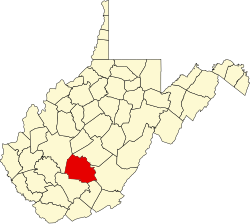Gaymont, West Virginia | |
|---|---|
| Coordinates: 38°6′53″N81°5′47″W / 38.11472°N 81.09639°W | |
| Country | United States |
| State | West Virginia |
| County | Fayette |
| Elevation | 1,470 ft (450 m) |
| Time zone | UTC-5 (Eastern (EST)) |
| • Summer (DST) | UTC-4 (EDT) |
| GNIS ID | 1554544 [1] |
Gaymont or Camont is an unincorporated community and coal town in Fayette County, West Virginia, United States.


